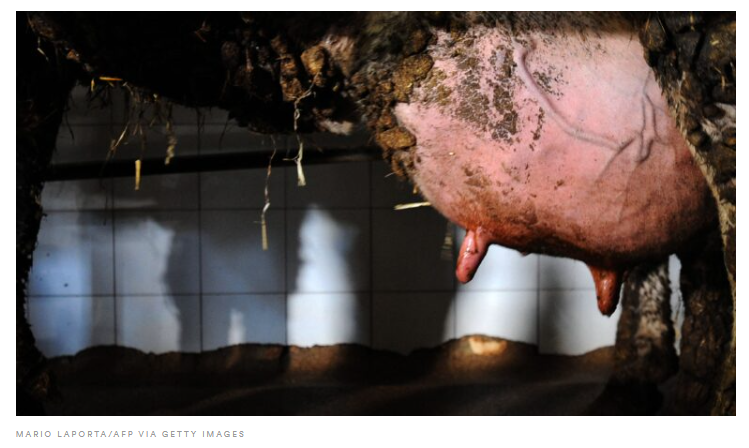Study of cow tissues provides clues for unusual pattern of bird flu infections in dairy cattle

Study of cow tissues provides clues for unusual pattern of bird flu infections in dairy cattle
By Helen Branswell
A new study looking at the distribution of receptors that flu viruses can attach to in different cow tissues may help to explain the pattern of illness being seen in the outbreak of H5N1 bird flu in U.S. dairy cattle — and also is sparking debate about the implications of the cow outbreak for human disease.
The study, a preprint that hasn’t yet been through peer review by a scientific journal, found that tissue from the mammary gland contains abundant receptors of the kind to which avian flu viruses like H5N1 can attach. But brain and respiratory tract tissues contained far fewer of this type of receptor.

That fits with the description of how this virus is behaving in cows, with clear signs of infection in the udders, but little evidence of respiratory tract infections and no reports to date of cows experiencing neurological symptoms. This virus has been seen to attack the brains of a number of other mammalian species it can infect, including cats, which is why consideration of whether cows’ brains are also susceptible is important.
The work was done by scientists at the University of Copenhagen, Denmark’s Statens Serum Institut, and St. Jude Children’s Research Hospital in Memphis, Tenn. The distribution of the receptor types — some of which avian flu viruses can attach to, others to which human flu viruses attach — raises concerns that cows could potentially give rise to a version of H5N1 or another novel flu virus that is able to transmit efficiently to and among people, the authors suggested.
“These results provide a mechanistic rationale for the high levels of H5N1 virus reported in infected bovine milk and show cattle have the potential to act as a mixing vessel for novel [influenza virus] generation,” they wrote.
Pigs, which can be infected with both bird flu and human flu viruses, have traditionally been referred to as mixing vessels for new viruses that could pose a pandemic threat. That’s because when an animal is co-infected with different flu viruses, the pathogens can swap genes, a process called reassortment. That phenomenon could give rise to new virus strains with enough human genes to be able to easily infect people, but also enough bird flu genes to be foreign enough to human immune systems that they could pose a serious risk to human health.
Cows have not been thought to pose such a risk. Though it’s known they can be infected with flu viruses, influenza hasn’t been seen to be a major issue for cows. And until this outbreak, cows have not played a role in the H5N1 story.
This virus, first seen in China in 1996, is primarily one that infects wild birds and domestic poultry, though it has been shown to be able to infect numerous mammalian species over the nearly three decades that have followed. In that time, nearly 900 human infections have been detected. Of those people, roughly half have died.
In the current U.S. outbreak, one human case has been detected, a dairy farm worker in Texas whose sole symptom was conjunctivitis. It’s widely believed there may have been other cases, but farmers have in many cases been unwilling to cooperate with health authorities trying to investigate the outbreak and many of the workers have been wary of cooperating as well.
